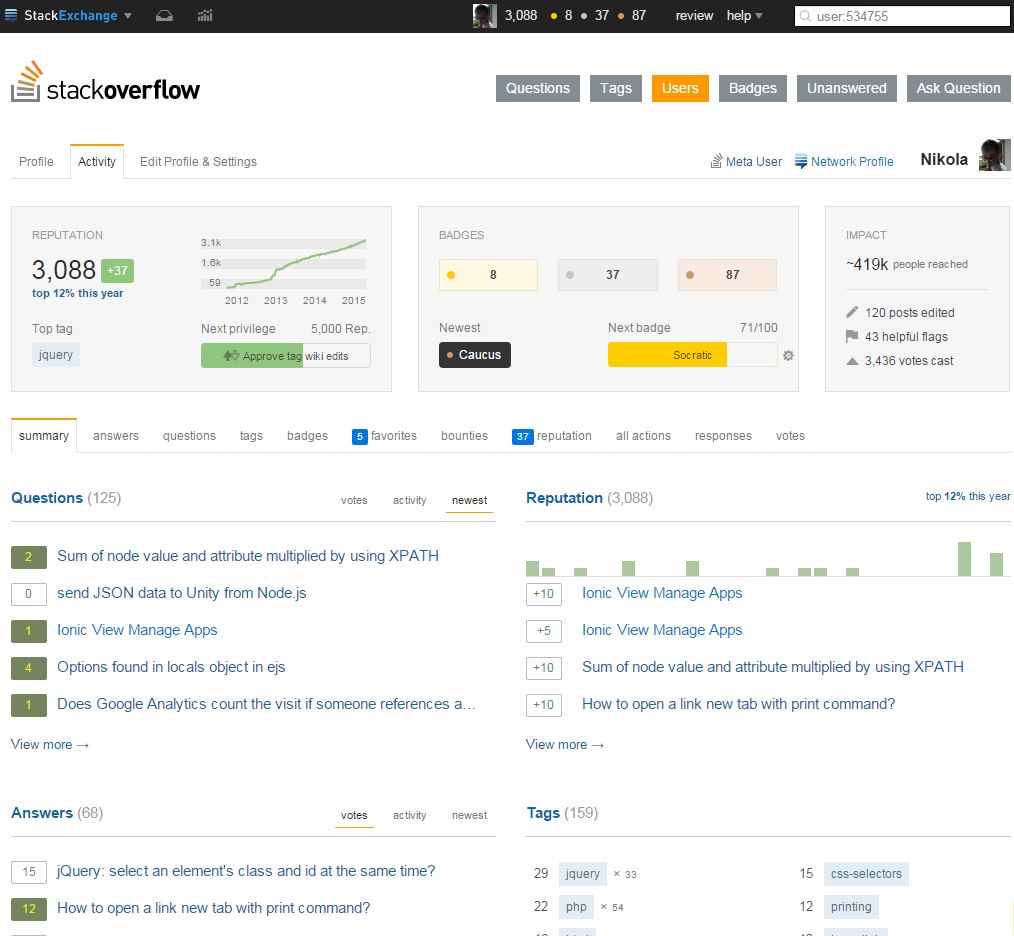
I’m a big fan of Stack Overflow and I tend to contribute regularly (am currently in the top 0.X%). In this category (stackoverflow) of posts I will will be posting my top rated questions and answers. This, btw, is allowed as explained in the meta thread here.
My question was:
Let’s say you have two arrays of arrays with the same structure but different count of arrays in them:
$arr1 = array(array(1,"b"), array(2,"a"), array(5,"c")); $arr2 = array(array(3,"e"));
Now, the data in the $arr1 and $arr2 is sorted, and now what I would like it to merge these two arrays, so I did this:
$res = array_merge($arr1, $arr2);
And then I get an output like this:
1-b 2-a 5-c 3-e
But, I would like to have a sorted $res also like this:
1-b 2-a 3-e 5-c
I wonder if there’s a function in PHP to do this automatically, without me having to write my own function? Or, please advise me on which is the best approach for this if I want to (later on) add sorting by the next parameter so the output would be like this
2-a 1-b 5-c 3-e
The answer, by user fieg, was:
You can first merge the arrays and then sort the final array.
You are probably looking for a multi-sort function. I usually use this function (I found this functions somewhere on the internet years ago, credits go to the original author):
/* * sort a multi demensional array on a column * * @param array $array array with hash array * @param mixed $column key that you want to sort on * @param enum $order asc or desc */ function array_qsort2 (&$array, $column=0, $order="ASC") { $oper = ($order == "ASC")?">":"<"; if(!is_array($array)) return; usort($array, create_function('$a,$b',"return (\$a['$column'] $oper \$b['$column']);")); reset($array); }You can use it like this:
array_qsort2($res, 0, "ASC");



